Top Apple Varieties and Trees to Grow in Your Garden
Published: September 10, 2025 at 9:40:23 PM UTC
Few garden experiences rival biting into a crisp, juicy apple you've grown yourself. Whether you have acres of land or just a small patio, growing your own apple trees connects you to a tradition that spans generations. The secret to success lies in selecting the right varieties for your specific conditions. This guide will help you navigate the wonderful world of apple trees, from understanding pollination needs to choosing varieties that thrive in your climate zone.
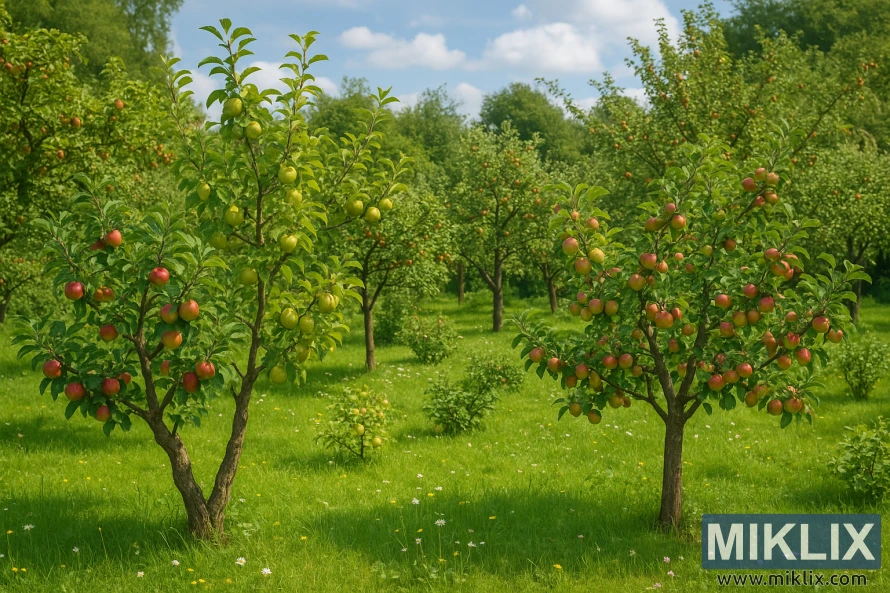
Key Factors to Consider When Choosing Apple Trees
Before rushing to purchase apple trees, several important factors will determine your success. Understanding these elements will help you select varieties that will thrive in your specific garden conditions.
Climate Suitability
Apple trees generally thrive in areas with cold winters, as they need a certain number of "chill hours" (temperatures between 32-45°F) to break dormancy and regulate growth. Most varieties won't grow well in zones warmer than 8, though some exceptions exist for warmer climates.
To determine your climate zone, check the USDA Plant Hardiness Zone Map. Then match apple varieties to your specific zone for the best results.
Chill Hours
Different apple varieties require different amounts of cold weather to produce fruit properly. This requirement is measured in "chill hours" - the number of hours during winter when temperatures fall between 32-45°F.
Low-chill varieties (200-400 hours) work well in warmer regions, while high-chill varieties (800-1000+ hours) are suited to northern climates. Choosing varieties with appropriate chill hour requirements for your region is essential for successful fruiting.
Pollination Requirements
Most apple trees need cross-pollination from a different variety that blooms at the same time to produce fruit. Apple varieties are categorized into flowering groups (1-7) based on when they bloom. For successful pollination, plant at least two compatible varieties within 50 feet of each other.
Some varieties are "triploid," meaning they need two separate pollinators to produce fruit. Others are self-fertile but will still produce better with a pollination partner. Crabapple trees can also serve as excellent pollinators if they bloom during the same period.
Space Requirements
Consider the mature size of your apple tree when planning. Standard trees can reach 20-25 feet in height and spread, while semi-dwarf varieties typically grow 12-15 feet tall. Dwarf varieties, perfect for small gardens, usually reach 8-10 feet.
For very limited spaces, consider columnar apple trees that grow upright with minimal spread, or train trees as espaliers against walls or fences. Container growing is also possible with dwarf rootstocks for patio gardens.
Disease Resistance
Some apple varieties have natural resistance to common diseases like apple scab, cedar apple rust, powdery mildew, and fire blight. Choosing disease-resistant varieties can significantly reduce the need for chemical treatments and increase your chances of a successful harvest, especially if you prefer organic growing methods.
Quick Tip: For the best results, choose at least two compatible apple varieties that: 1) grow well in your climate zone, 2) have overlapping bloom times for cross-pollination, and 3) offer disease resistance suitable for your region.
Best Apple Varieties for Home Gardens
With thousands of apple varieties available, finding the perfect ones for your garden can feel overwhelming. We've selected 10 outstanding varieties that perform exceptionally well in home gardens across different growing zones.
| Variety | Flavor Profile | Harvest Season | Hardiness Zone | Pollination Group |
| Honeycrisp | Sweet, crisp, juicy | Mid-September | 3-7 | 4 |
| Fuji | Sweet, crisp | Late October | 6-9 | 3 |
| Gala | Mildly sweet, aromatic | Late August | 5-8 | 4 |
| Granny Smith | Tart, crisp | October | 6-9 | 3 |
| Pink Lady | Sweet-tart, crisp | Late October | 6-9 | 3 |
| McIntosh | Tart, juicy, aromatic | September | 4-7 | 2 |
| Liberty | Sweet-tart, crisp | Mid-September | 4-7 | 3 |
| Arkansas Black | Spicy, firm | Late October | 4-8 | 3 |
| Gravenstein | Sweet-tart, aromatic | August | 2-9 | 1 |
| Northern Spy | Sweet-tart, juicy | Late October | 3-7 | 5 |
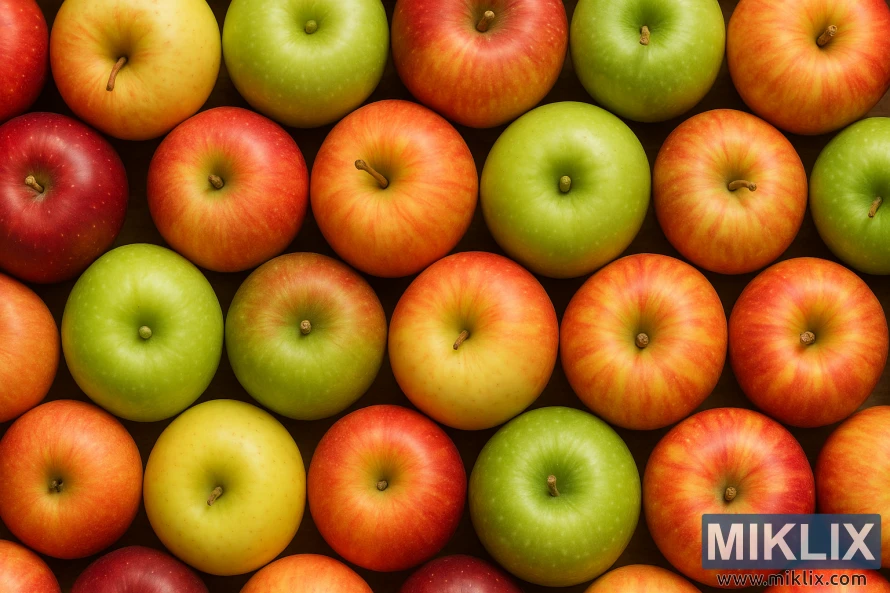
Detailed Variety Profiles
Honeycrisp
Best uses: Fresh eating, salads
Storage life: 5-6 months when refrigerated
Special notes: Exceptionally crisp and juicy with perfect sweet-tart balance. Self-fertile but produces better with a pollinator. Requires proper thinning for best fruit size.

Fuji
Best uses: Fresh eating, juicing, cider
Storage life: Up to 6 months
Special notes: Sweet and crisp with excellent flavor that improves in storage. Needs regular watering. Good choice for warmer climates with lower chill requirements.
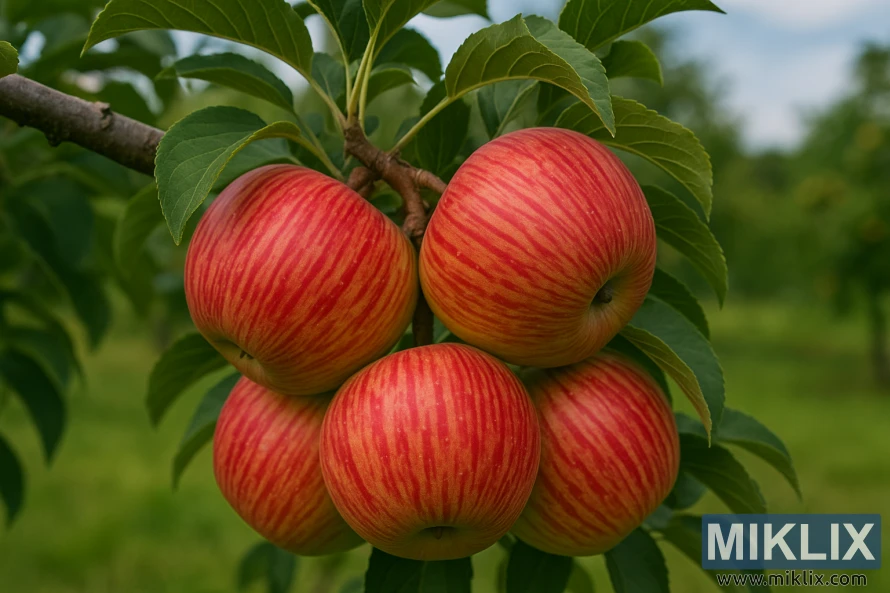
Granny Smith
Best uses: Baking, pies, fresh eating
Storage life: 3-4 months
Special notes: Tart flavor perfect for cooking. Self-fertile but benefits from cross-pollination. Thrives in warmer climates with only 400 chill hours required.

Choosing the Right Apple Tree Type for Your Space
The size and form of your apple tree are just as important as the variety. Different rootstocks and training methods can help you fit apple trees into almost any garden space.
Standard Trees
Height: 18-25+ feet
Spacing needed: 25-30 feet apart
Years to fruit: 5-8 years
Lifespan: 50+ years
Best for: Large properties, traditional orchards
Standard trees grow on seedling rootstock and reach the largest size. They're long-lived and eventually produce the most fruit, but take longer to start bearing and require more space.
Semi-Dwarf Trees
Height: 12-15 feet
Spacing needed: 15-20 feet apart
Years to fruit: 3-5 years
Lifespan: 30-40 years
Best for: Medium-sized gardens
Semi-dwarf trees offer a good balance between size, production, and longevity. They're easier to prune and harvest than standard trees while still producing substantial crops.
Dwarf Trees
Height: 8-10 feet
Spacing needed: 8-10 feet apart
Years to fruit: 2-3 years
Lifespan: 15-25 years
Best for: Small gardens, containers
Dwarf trees are perfect for small spaces and begin bearing fruit quickly. They're easier to spray, prune, and harvest but may need staking for support and have shorter lifespans.
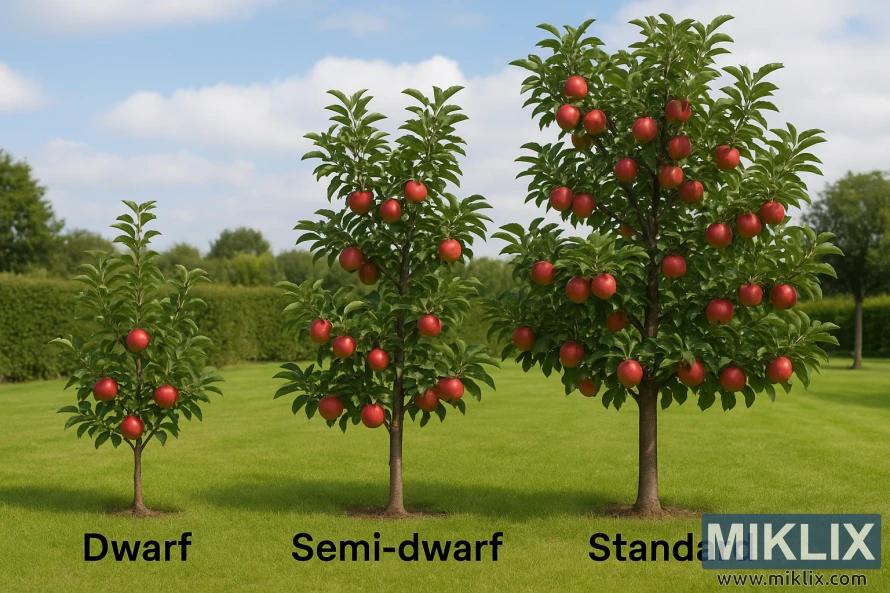
Specialized Forms for Small Spaces
Columnar (Pillar) Apples
Growing just 2-3 feet wide but 8-10 feet tall, these unique trees have almost no side branches. They're perfect for tiny spaces, containers, or as a decorative "living fence." Popular varieties include 'Northpole' and 'Golden Sentinel'.
Espalier
Training apple trees flat against a wall or fence creates a beautiful, space-saving garden feature. This traditional technique allows you to grow apples in a narrow space while creating an ornamental element.
Stepovers
These ultra-dwarf trees are trained horizontally at just 18-24 inches tall, making them perfect as edible garden borders. They require more maintenance but create a stunning effect when in bloom or fruit.
Container Growing
Dwarf apple trees can thrive in large containers (at least 18-24 inches wide and deep). Choose self-fertile varieties or grow compatible pairs on a patio or balcony. They'll need more frequent watering and feeding than ground-planted trees.

Planting & Care Guide for Apple Trees
Proper planting and ongoing care are essential for healthy, productive apple trees. Follow these guidelines to give your trees the best start and maintain them for years of abundant harvests.
Planting Your Apple Tree
When to plant: Early spring or late fall when trees are dormant.
Site selection: Choose a location with full sun (at least 6 hours daily) and good air circulation.
Soil preparation: Well-draining soil with a pH between 6.0-7.0 is ideal. Conduct a soil test and amend as needed.
Spacing: Plant trees according to their mature size (8-30 feet apart depending on rootstock).
Planting depth: The graft union (swelling near the base) should remain 2-3 inches above soil level.
Watering: Water thoroughly after planting and apply 2-3 inches of mulch, keeping it away from the trunk.
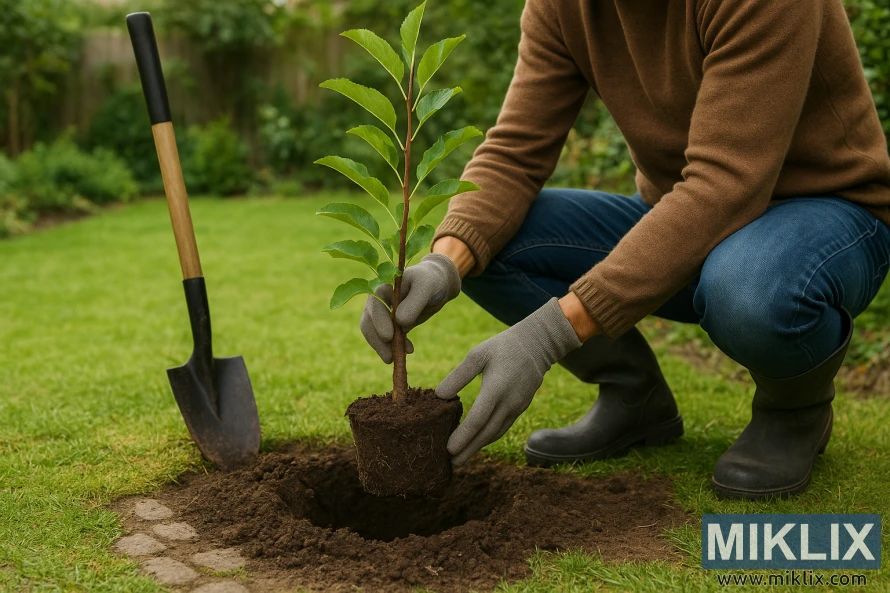
Pruning for Health and Production
Proper pruning establishes strong structure and encourages fruit production. Most apple trees should be pruned to a "modified central leader" system.
Winter Pruning (Dormant Season)
Prune in late winter before buds break to establish the basic structure. Remove dead or diseased wood, water sprouts (vertical shoots), and crossed branches. Thin out crowded areas to allow light penetration.
Summer Pruning
Light pruning in summer helps control size and encourages fruit bud formation. Remove vigorous upright shoots and thin fruiting branches if the tree is overloaded with developing apples.
Pest and Disease Management
Prevention is the best approach to managing apple tree problems. Integrated pest management combines multiple strategies for healthier trees.
Common Pests
- Apple maggot
- Codling moth
- Aphids
- Spider mites
Control methods include sticky traps, beneficial insects, organic sprays like neem oil, and proper orchard sanitation (removing fallen fruit).
Common Diseases
- Apple scab
- Fire blight
- Powdery mildew
- Cedar apple rust
Prevention includes choosing resistant varieties, proper pruning for air circulation, and organic fungicides when necessary.
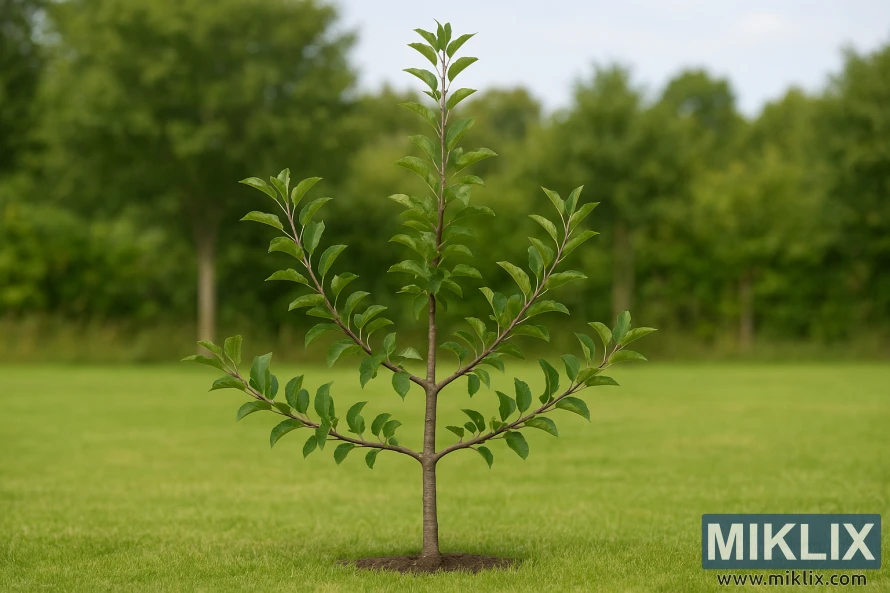
Organic Growing Methods
Many home gardeners prefer organic methods for growing apples. While it requires more attention to detail, the rewards are chemical-free fruit and a healthier garden ecosystem.
Choose resistant varieties: Liberty, Enterprise, and Freedom have excellent disease resistance.
Build healthy soil: Use compost, organic mulch, and cover crops to improve soil biology.
Encourage beneficial insects: Plant flowers like alyssum, dill, and cosmos to attract predatory insects.
Use organic sprays: Kaolin clay, neem oil, and compost tea can help manage pests and diseases.
Practice good sanitation: Remove fallen leaves and fruit to break disease cycles.
Expert Tips for Successful Apple Growing
Maximize Your Harvest
Thin fruit clusters to one apple every 6 inches to increase size and quality. Remove the smallest apples when they're marble-sized, leaving the largest one in each cluster.
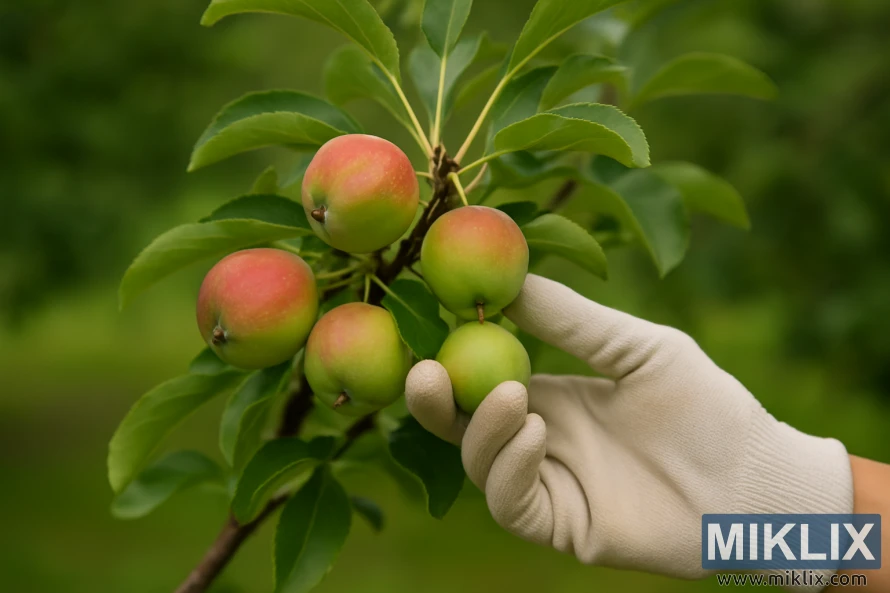
Prevent Biennial Bearing
Some varieties produce heavily one year and little the next. Prevent this by thinning fruit in heavy years and maintaining consistent pruning and fertilization practices.

Harvest at Peak Ripeness
Test ripeness by cupping the fruit in your palm and giving a gentle twist—ripe apples release easily. Seeds should be brown, not white, when the fruit is ready.
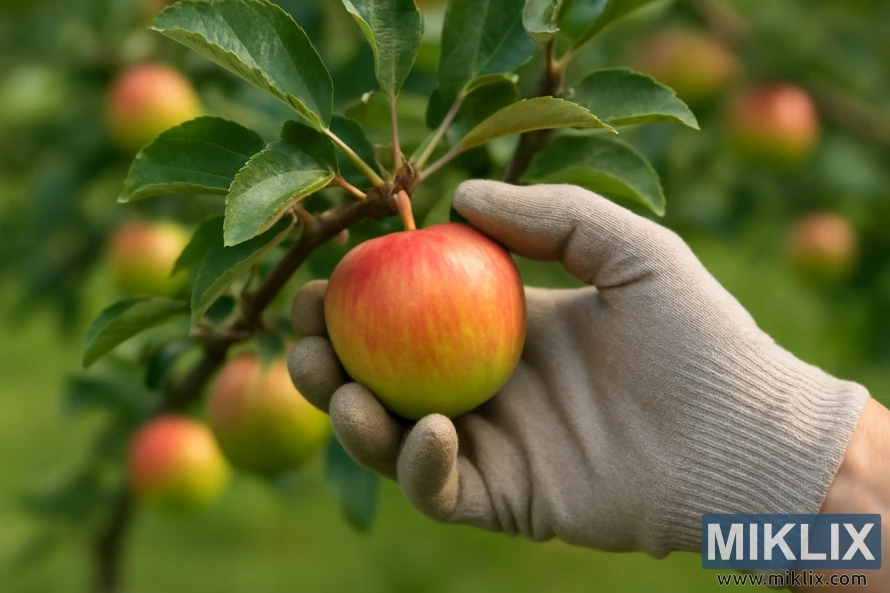
Companion Planting for Apple Trees
Certain plants can benefit your apple trees when grown nearby:
- Alliums (garlic, chives) repel pests and prevent apple scab
- Comfrey accumulates nutrients and makes excellent mulch
- Nasturtiums attract beneficial insects and repel pests
- Herbs like thyme, mint, and lavender deter pests and attract pollinators
Frequently Asked Questions
How long until my apple tree produces fruit?
Dwarf trees typically begin bearing fruit 2-3 years after planting, semi-dwarf trees in 3-5 years, and standard trees in 5-8 years. However, this varies by variety and growing conditions. Some trees may produce a few apples earlier, but full production takes longer to establish.
Can I grow apples in warm climates?
Yes, with careful variety selection. Choose low-chill varieties (requiring 200-400 chill hours) such as 'Anna', 'Dorsett Golden', 'Ein Shemer', or 'Pink Lady'. These can succeed in zones 8-10 where traditional varieties fail. Providing afternoon shade in hot climates can also help.
Do I need more than one apple tree to get fruit?
Most apple varieties require cross-pollination from a different compatible variety to produce fruit. While some varieties are self-fertile (like 'Granny Smith' and 'Golden Delicious'), even these will produce better crops with a pollination partner. Plant two compatible varieties, or rely on a neighbor's apple or crabapple tree within 50 feet.
How do I store apples after harvest?
Store apples in a cool (32-40°F), humid place with good air circulation. A refrigerator crisper drawer works well for small quantities. For larger harvests, consider a cool basement or garage. Sort apples before storage and remove any with bruises or damage. Different varieties have different storage lives, ranging from a few weeks to several months.
Why aren't my apple trees producing fruit?
Several factors can prevent fruiting: insufficient pollination (need compatible varieties), young tree age (not mature enough), improper pruning (too severe or at wrong time), insufficient chill hours for your variety, pest or disease issues, or nutrient imbalances (especially too much nitrogen). Assess these factors to determine the specific cause.
Conclusion
Growing apple trees in your home garden connects you to a rich horticultural tradition while providing delicious, fresh fruit for your family. By selecting varieties suited to your climate, understanding pollination needs, and providing proper care, you can enjoy abundant harvests for many years to come.
Remember that patience is key—apple trees are a long-term investment that improves with age. Start with disease-resistant varieties appropriate for your growing zone, and don't hesitate to experiment with different types to discover your favorites.
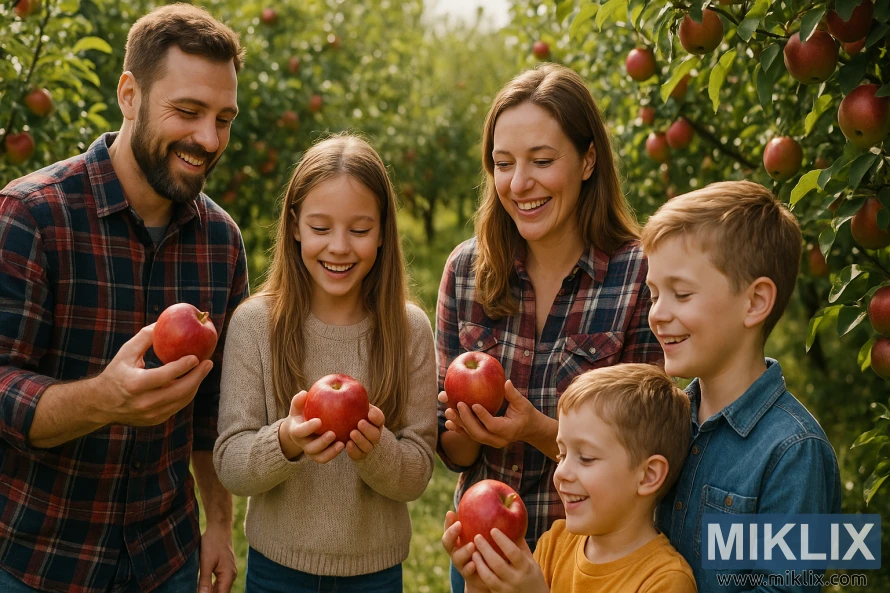
Further Reading
If you enjoyed this post, you may also like these suggestions:
- Growing Asparagus: A Complete Guide for Home Gardeners
- A Guide to Growing Your Own Cucumbers From Seed to Harvest
- A Guide to Growing the Best Kale in Your Garden
